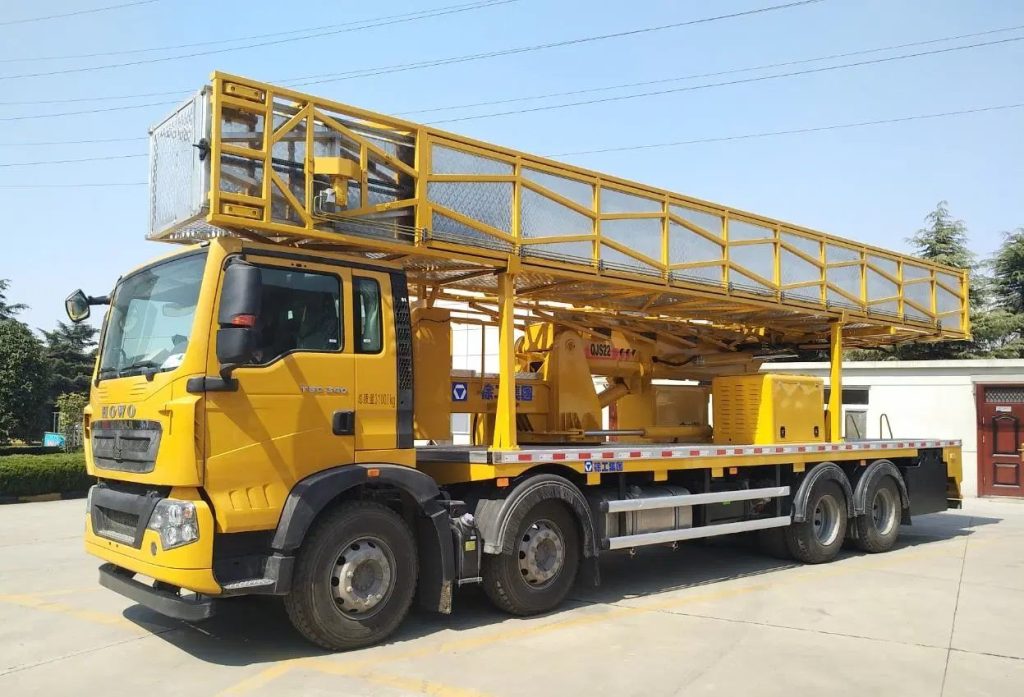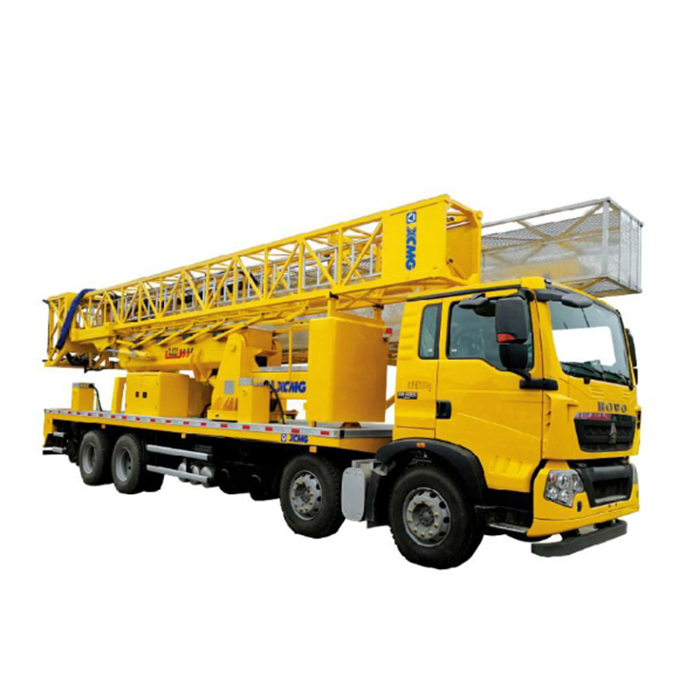Spotlight on Bridge Machinery: Which Ones Truly Stand Out?
Industry News
2025/09/19

Building bridges is a big challenge. It needs skill, careful planning, and the right tools to succeed. Whether you’re fixing an old structure or starting a new one, the bridge machinery you pick can make a huge difference. Some machines stand out for their usefulness and strength. This blog looks at four key types: inspection vehicles, straddle carriers, girder transporters, and girder launchers. They’re game-changers for people in construction, from experienced workers to beginners wanting to build a good name. Let’s explore what makes them special and how they can improve your work.
The Role of Bridge Machinery in Construction
Bridge machinery isn’t just equipment—it’s the main support of modern construction. These machines handle tough tasks, like lifting heavy girders or checking every part of a bridge’s frame. They save time, keep safety high, and deal with problems that people alone can’t fix. For construction teams, using the right machinery builds trust with clients and shows expertise. A smart choice turns a hard project into an easy win, while a bad pick might leave you struggling.
The industry depends on these machines to stay on schedule. Bad weather, tight deadlines, and big loads need equipment that works well. Inspection vehicles look for damage. Straddle carriers move large pieces easily. Girder transporters shift loads across sites. Girder launchers set everything in place. Together, they help bridges stay strong.
Spotlight on Key Bridge Machinery
Let’s dive into each one to see why they shine.
Inspection Vehicles: The Eyes of the Operation
Inspection vehicles are quiet heroes in bridge care. Imagine a truck with a long arm stretching over a bridge, letting workers spot cracks or rust without danger. These machines are made to reach places that ladders or ropes can’t touch. They’re great for regular checks or finding problems after a storm.
What makes them special? Their reach and steadiness. Some can extend over 20 meters, giving a clear look at undersides and joints. Operators sit in a safe, closed bucket, guiding the arm with care. This setup cuts delays and protects workers, which is a big help for any site leader. Plus, they adjust to different bridge sizes, making them a top pick for small fixes or large inspections.
Real use proves this. Teams often use these vehicles to meet strict safety rules, avoiding expensive shutdowns. For someone building their reputation, knowing how to use them shows attention to detail and reliability.
Straddle Carriers: Powerhouse Movers
Straddle carriers are like the strong arms of bridge building. These tall, tire-mounted giants lift and carry heavy precast segments or girders right to the work area. Picture a machine stepping over obstacles, placing a 50-ton piece exactly where needed—no cranes required. That’s the kind of freedom they offer.
Their power comes from mobility and load size. With legs that straddle loads, they handle weights up to hundreds of tons. They roll on rubber tires, moving smoothly over uneven ground or paved spots. This makes them perfect for tight sites or places where usual lifting gear won’t work. Safety features, like hydraulic controls and emergency stops, bring peace of mind.
On the job, straddle carriers speed up assembly. A crew can move several segments in a day, shaving weeks off a timeline. For contractors, this quick work builds a name for meeting deadlines. If you want to stand out, learning to use these machines can set you apart.
Girder Transporters: The Heavy Haulers
Girder transporters are the tough workers that move big loads from one spot to another. These vehicles carry long, heavy girders—think concrete or steel beams—across construction sites or even through tunnels. They’re built to handle the weight and keep things steady, often teaming up with other machines like launchers.
What makes them different? Their flexibility. Some use hydraulic systems to change height or angle, fitting various girder sizes. They roll on tracks or tires, depending on the ground, and can pull equipment too. This adaptability shines on tricky projects, like highways or railways, where every step matters.
Efficiency is key. A good transporter shortens travel time, letting crews focus on building. Site leaders say these machines cut manual handling, lowering injury risks. For pros, knowing how to use them shows a deep grasp of planning—a skill clients notice.
Girder Launchers: Precision Placers
Girder launchers are the final step in bridge building. These huge structures lift girders into place, sliding them onto piers with exact accuracy. They mix crane and scaffold ideas, moving forward as each section is set. It’s like watching a puzzle fit together, piece by piece.
Their big strength is precision. Launchers can manage spans of 30 meters or more, placing girders without messing up the area below. They use hydraulic or electric systems to lift and move, with safety locks to hold everything firm. This makes them ideal for fast rail lines or long bridges where errors cost a lot.
Speed is another win. A launcher can set several girders in a day, speeding up projects a lot. Workers like how they work in tight spaces, like over rivers or roads. For anyone wanting to boost their career, skill with launchers shows top-level talent and confidence.
Comparing the Standouts: A Quick Look

To give you a clear picture, here’s how these machines line up based on important factors:
| Machine | Best For | Weight Capacity | Mobility | Precision |
| Inspection Vehicle | Maintenance, Inspections | Light to moderate | High | High |
| Straddle Carrier | Segment Lifting | Heavy (50+ tons) | Very High | Moderate |
| Girder Transporter | Load Transport | Heavy (100+ tons) | High | Low to Moderate |
| Girder Launcher | Girder Placement | Heavy (100+ tons) | Moderate | Very High |
Each machine has its moment. Inspection vehicles lead in safety checks. Straddle carriers rule heavy lifting. Girder transporters manage logistics. Launchers nail the finish. Choose based on your project, and you’ll see the difference.
Tips for Choosing and Using Bridge Machinery
Getting the best from bridge machinery takes some know-how. Here are some practical tips:
- Match the Job: Small repairs? Pick an inspection vehicle. Big builds? Go with launchers or carriers. Know your plan first.
- Check the Site: Tight areas favor straddle carriers. Open spaces suit transporters or launchers. Walk the ground before deciding.
- Train Your Team: Safety comes first. Brief everyone on controls and limits. Hands-on practice builds confidence.
- Maintain Regularly: Grease moving parts. Check hydraulics. A quick fix beats a breakdown mid-job.
- Plan for Weather: Rain or wind can slow things down. Schedule around forecasts to keep moving.
One site leader shared how regular upkeep cut delays by 30%. Another praised training—his team’s smooth work won a repeat client. These steps build your name as a pro who gets results.
Introducing MachPlaza as a Bridge Machinery Supplier
Before tackling common questions, let’s highlight MachPlaza’s role. As a leading exporter of Chinese construction machinery, MachPlaza offers a wide range of solutions, including inspection vehicles, straddle carriers, girder transporters, and girder launchers. Their team focuses on quality service, fair prices, and on-time delivery, supported by a strong network of suppliers. With a promise to help customers from start to finish, they’re a trusted partner for businesses worldwide tackling bridge projects with confidence.
Conclusion
Bridge machinery isn’t just tools—it’s your chance to shine in a tough field. Inspection vehicles keep structures safe. Straddle carriers handle the heavy stuff. Girder transporters keep logistics smooth. Girder launchers finish with precision. Together, they cover every part of bridge work, from start to end. Whether you’re a contractor aiming to impress or a worker growing skills, mastering these machines can lead to success. Pick the right one, use it well, and watch your projects—and reputation—grow.
FAQs
What makes inspection vehicles stand out in bridge machinery?
Inspection vehicles shine with their ability to reach tricky spots safely. Their long arms and steady buckets let crews check bridges without risks, making them a top choice for upkeep.
How do straddle carriers improve bridge construction?
Straddle carriers speed things up by lifting and moving heavy girders easily. Their tire design fits tight sites, cutting time and boosting efficiency on big jobs.
When should I use a girder transporter for bridge work?
Use a girder transporter when you need to move long, heavy loads across a site. They’re great for shifting girders to launchers or handling rough terrain.
Why are girder launchers critical for bridge projects?
Girder launchers are key for placing girders with spot-on accuracy. They manage long spans and tough spots, ensuring bridges go up fast and firm.
How can I learn to operate bridge machinery effectively?
Start with hands-on training from experienced workers. Add regular practice and site visits to get comfy with each machine’s strengths.
